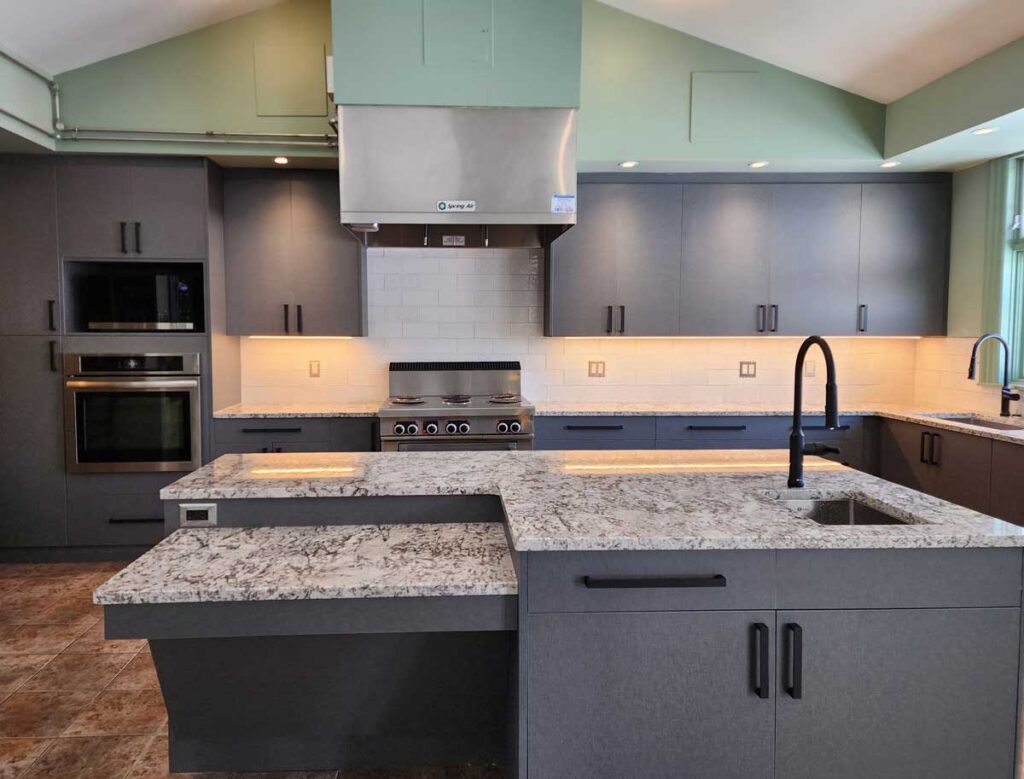Key Takeaways
- Warmer kitchen colors, wood tones begin to replace white/off-white looks
- Both kitchens and bathrooms are continuing to increase in size
- Bathroom design to undergo significant change as homeowners take cues from hotel/travel experiences
By Robert Isler
The top kitchen and bath trends emerging from the recent NKBA 2022 Design Trends study can be narrowed down to a few key words: simple, natural, functional and bold colors. The study, which resulted from a survey of association members, showed that technology solutions, nature and, to a lesser degree, trends from Europe, are also strong influence.
Getting down to specifics, warmer colors and more wood tones easily top the list for likely styles. As for color, the trend is toward replacing all-white with lighter-stained woods and incorporating bold shades in backsplashes, wallcoverings, paint and artwork. Styles are shifting toward “simple, clean, minimalistic and modern”, featuring touchless technology and fewer accessories. Cabinets were next likely to be discussed for near-term change, with deeper base cabinets for more storage space, fewer uppers, contemporary and flat-front all in play.
Top Kitchen Trends
The most prominent kitchen features during the next three years, according to those surveyed, will be easy-to-clean flooring (67 percent); large islands that can also function as dining tables (63 percent); and the removal of walls to enlarge the kitchen (62 percent). Interestingly, when the same set of choices were offered to millennials, they chose flex space for home office activities as their number one priority, followed by easy-to-clean flooring and touchless faucets.
Regarding sustainability, the majority singled out 100 percent LED lighting, followed by separate recycling storage and the increased use of natural light through larger, high-performance windows and doors. Millennials agreed with the first two, but for the third sustainability factor they chose alternate energy-efficient water heaters.
Nearly three-in-four respondents said they mostly designed mid-sized kitchens, measuring 150-350-square feet. And more than 40 percent of all respondents said they expect the scope of their projects to become more involved, while a whopping 84 percent expect the size of the kitchen to increase.
Top Bathroom Trends
In bathrooms, the top three projected styles are influenced by hotel and travel, technology solutions and nature. While technology and nature mirror what’s happening in kitchens, homeowners are looking to replicate the spa-like feel and smart features found in high-end hotels in their own bathrooms. They are increasingly seeking the better hotel experience at home, leading to a shift in the future of bath design.
Another top design change involves replacing the traditional shower and tub with larger, curbless showers. Meanwhile living-in-place and functional designs are going to continue to gain momentum.
Other prominent trends across all consumer lifestages involve the removal of walls or the redistribution of space within the primary bathroom. The most popular? Removing standard tubs to make room for larger showers and/or freestanding tubs, followed by increasing the bathroom’s footprint to provide space for a connected closet/dressing area. And as with kitchens, the top sustainability feature is 100% LED lighting.
Perhaps the most dramatic change forecasted that 76 percent of survey respondents expect the size of the primary bathroom will grow. Last year, 67 percent of respondents forecasted a space increase and three years ago only 42% predicted growth. The decision to remove walls adjacent to the bathroom and extend the space is leading to an evolution in the very definition of the bathroom from a functional room to one that doubles as an escape from life’s stresses.
























